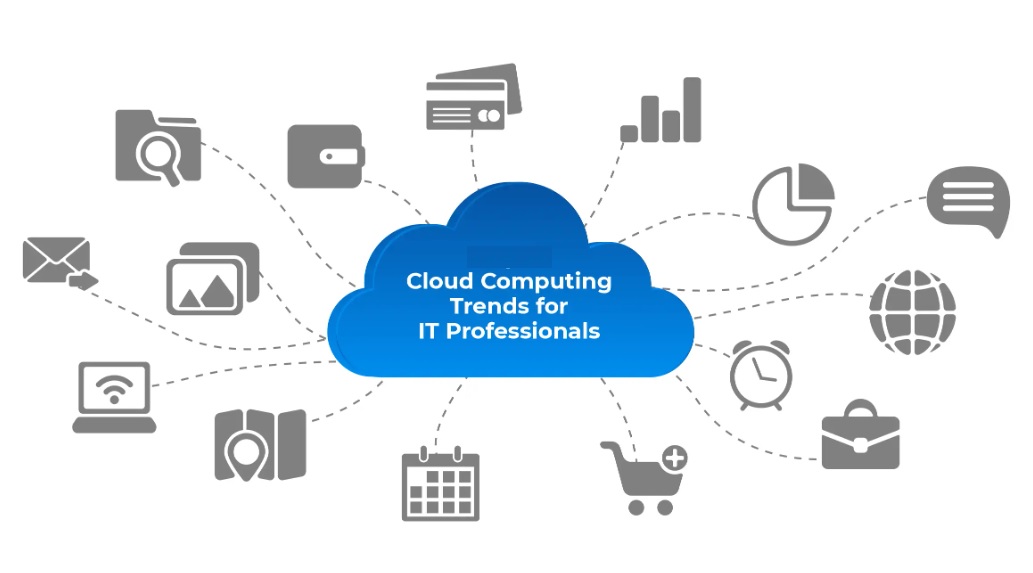Cloud computing continues to evolve as one of the most transformative technologies of the digital age. From improving operational efficiencies to enabling innovation, cloud computing trends highlight the cutting-edge advancements that drive growth and agility for businesses and individuals alike. This article explores the latest cloud computing trends, their applications, and their impact on the future of technology.
Table of Contents
- Introduction
- Key Cloud Computing Trends
- Hybrid and Multi-Cloud Strategies
- Edge Computing
- Serverless Architecture
- Artificial Intelligence and Machine Learning Integration
- Sustainability and Green Cloud
- Industry Applications of Cloud Computing Trends
- Finance and Banking
- Healthcare
- Retail and E-commerce
- Benefits of Embracing Cloud Computing Trends
- Cost Efficiency
- Scalability and Flexibility
- Enhanced Security
- Challenges in Adopting
- Data Privacy Concerns
- Integration Complexities
- Skills Gap
- Futures
1. Introduction
Cloud computing trends reflect the innovative ways in which cloud technology is advancing and adapting to meet the ever-changing demands of businesses and consumers. These trends are driven by the need for greater efficiency, flexibility, and sustainability in a competitive digital landscape.
2. Key Cloud Computing Trends
Hybrid and Multi-Cloud Strategies
Hybrid and multi-cloud strategies are becoming the norm as businesses seek to leverage the benefits of both private and public clouds. This approach provides flexibility, avoids vendor lock-in, and ensures redundancy. Companies can choose specific cloud providers for particular workloads based on cost, performance, and compliance requirements.
Edge Computing
Edge computing is revolutionizing the way data is processed by bringing computation and storage closer to the source of data generation. This reduces latency, improves performance, and supports real-time applications such as IoT devices, autonomous vehicles, and smart cities. Edge computing complements cloud computing by enabling faster decision-making at the local level while relying on the cloud for centralized storage and analytics.
Serverless Architecture
Serverless computing is gaining traction for its ability to abstract infrastructure management. Developers can focus on writing code without worrying about server provisioning or maintenance. With serverless platforms like AWS Lambda, Azure Functions, and Google Cloud Functions, organizations only pay for the computing resources they consume, making this trend highly cost-efficient and scalable.
Artificial Intelligence and Machine Learning Integration
Cloud providers are increasingly embedding AI and ML capabilities into their services. Platforms like Google Cloud AI and AWS SageMaker allow businesses to build and deploy intelligent applications with ease. AI-driven insights enable better decision-making, automation of routine tasks, and the development of personalized customer experiences.
Sustainability and Green Cloud
As environmental concerns grow, cloud providers are focusing on sustainability by adopting renewable energy sources and optimizing data center efficiency. Green cloud initiatives aim to reduce the carbon footprint of cloud operations, aligning with global sustainability goals while providing energy-efficient solutions to clients.
3. Industry Applications of Cloud Computing Trends
Finance and Banking
Cloud computing trends are transforming the financial sector by enabling secure and scalable solutions for payment processing, fraud detection, and customer analytics. Hybrid cloud environments are particularly popular in finance, allowing institutions to maintain sensitive data on-premises while leveraging public clouds for non-sensitive operations.
Healthcare
The healthcare industry is embracing cloud trends to enhance patient care, optimize operations, and improve data security. Edge computing supports real-time monitoring through wearable devices, while AI-driven cloud platforms enable predictive analytics for early disease detection.
Retail and E-commerce
Retailers are using cloud computing to improve inventory management, enhance customer experiences, and enable seamless omnichannel operations. AI integration helps businesses analyze consumer behavior and deliver personalized recommendations, while serverless architecture supports scalable e-commerce platforms during peak demand.
4. Benefits of Embracing Cloud Computing Trends
Cost Efficiency
Cloud computing eliminates the need for substantial upfront investments in hardware and infrastructure. Businesses can adopt a pay-as-you-go model, reducing operational costs and enabling better resource allocation.
Scalability and Flexibility
Cloud computing provides unparalleled scalability, allowing businesses to quickly adapt to changing demands. Whether it’s handling seasonal traffic spikes or scaling resources for long-term growth, the cloud ensures operational flexibility.
Enhanced Security
Modern cloud platforms offer advanced security features such as encryption, multi-factor authentication, and real-time monitoring. Providers also adhere to strict compliance standards, ensuring data protection and regulatory compliance.
5. Challenges in Adopting
Data Privacy Concerns
Storing sensitive data on the cloud raises concerns about unauthorized access and breaches. Businesses must implement robust security measures and ensure compliance with data protection regulations.
Integration Complexities
Integrating cloud services with existing on-premises systems can be challenging. Compatibility issues and the need for specialized expertise often require significant effort and investment.
Skills Gap
The rapid evolution of cloud technology has created a skills gap, with many organizations struggling to find qualified professionals to manage and optimize their cloud environments.
6. Futures
The future of cloud computing lies in greater automation, enhanced security, and continued innovation. Trends like quantum computing, 5G integration, and AI-driven cloud operations will further revolutionize the industry. Organizations that stay ahead of these trends will be well-positioned to thrive in an increasingly digital world.
In conclusion, cloud computing trends are reshaping the way businesses operate, innovate, and compete. By embracing these trends, organizations can unlock new opportunities, overcome challenges, and build a sustainable and resilient future.



